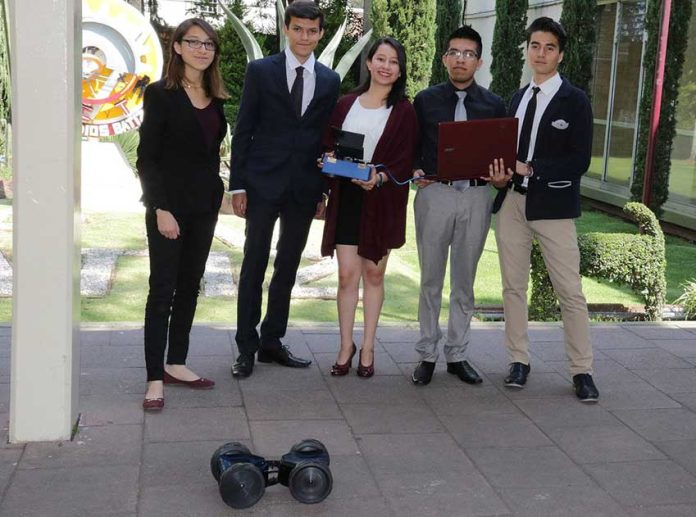A group of students from the National Polytechnic Institute (IPN) has developed a rescue robot capable of detecting the presence of earthquake survivors trapped under rubble.
Called Heiland, which means savior in German, the robot was designed to aid human and canine rescue workers when carrying out rescue missions in the aftermath of quakes or other natural disasters.
The robot prototype consists of two fiberglass boxes joined at the center in a form similar to the body of an ant, four wheels, an FPV (first-person view) camera that sends images in real time and a passive infrared sensor, which can detect body heat from the bodies of people or animals even if they are not visible to the camera.
It also uses a Hall effect sensor and a magnetic pick-up sensor to help it navigate amid rubble and regain its balance in the case of sustaining a fall and flipping over.
The sensors are programmed by an Arduino Mega micro-controller board and the robot is manipulated by a joystick remote control, with which forward, reverse and turn commands can be made within a radius of 100 meters.
The remote control has a built-in LCD screen to which the camera images are transmitted.
Heiland is the brainchild of Itzeli Camacho Vargas, Abril Suárez López, Gerardo Huerta Pérez, Eduardo Salmerón Sánchez and José Sánchez Ramírez, all of whom are studying for IPN’s Technical Studies in Digital Systems degree.
They said they also plan to develop an interface that will enable information such as the number of people the robot detects to be sent back to the person controlling the device.
Other possible future improvements include adding a sensor to the robot that can detect gas leaks and the development of a mobile application that will allow Heiland to be operated via a cellphone or tablet.
“What we are planning is for the robot to be able to support rescue groups and reduce the risk of losing human and canine lives in the search for people trapped by the collapse of homes or buildings because of a natural disaster, like the earthquake that occurred on September 19 last year,” the students said.
Source: El Financiero (sp)
